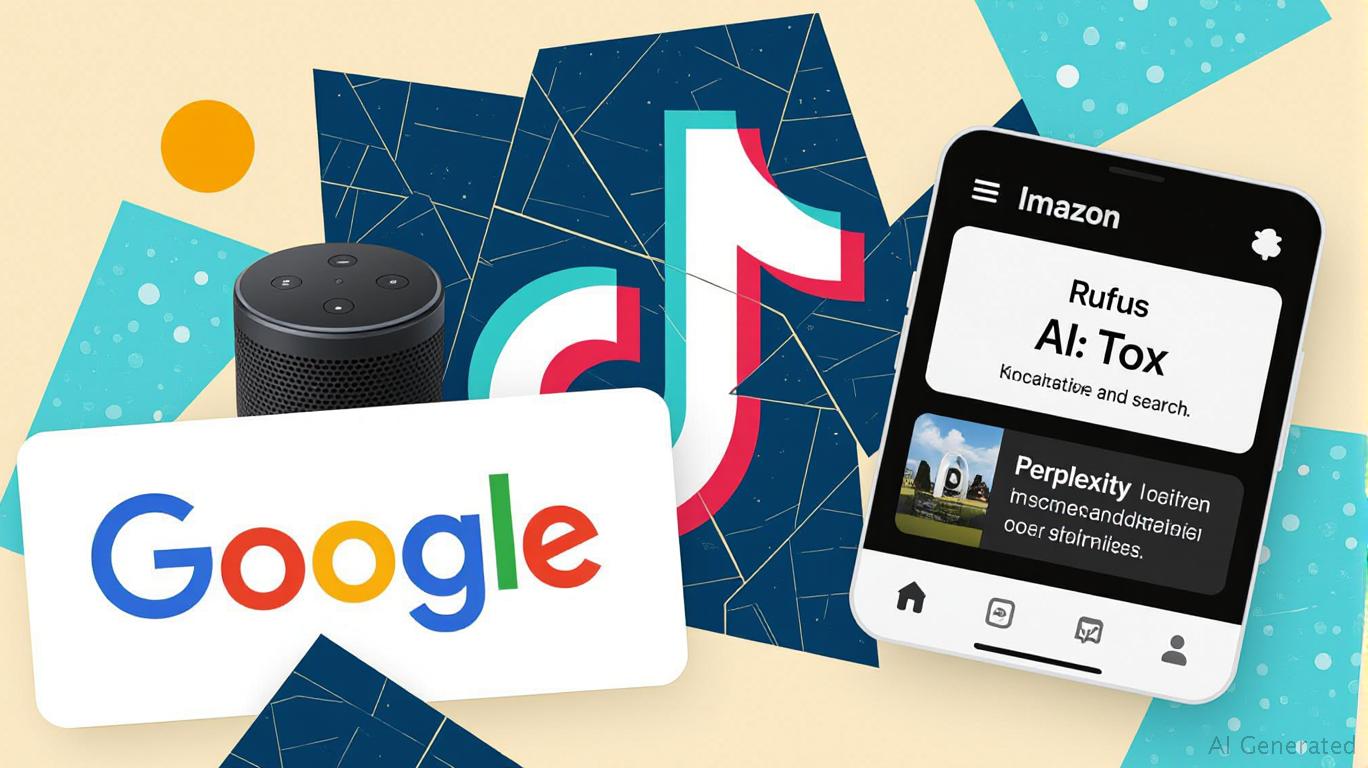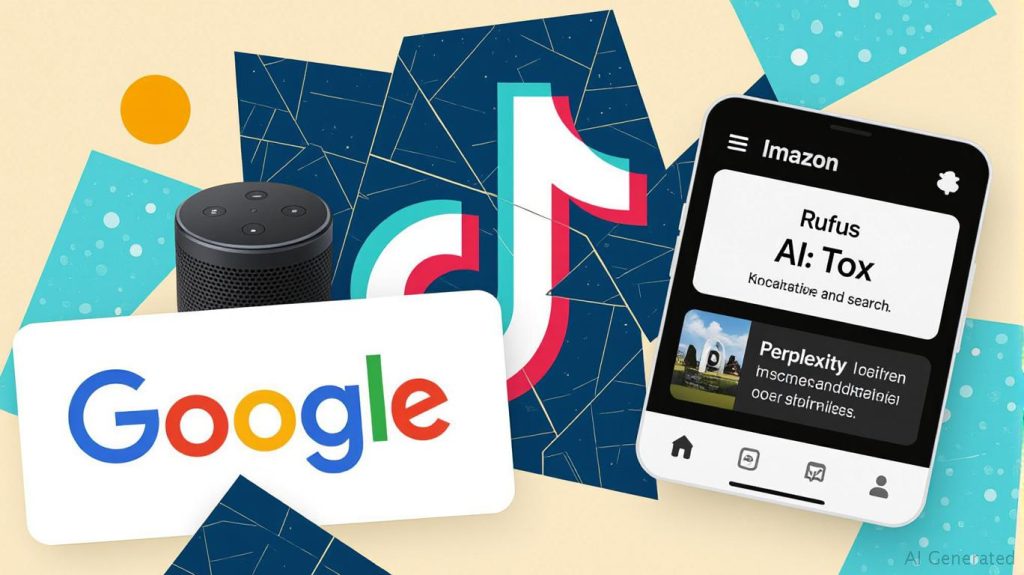The digital advertising landscape is undergoing a seismic shift, driven by the rise of multimodal search and AI-powered advertising. Companies like Amazon, TikTok, and Perplexity are leveraging generative AI to challenge Google’s dominance, upending traditional search engine strategies and reshaping how users interact with information—and advertisers monetize it. For investors, this disruption presents a critical crossroads: the winners will be those who adapt to a world where search is no longer text-only, and ads are woven into the fabric of AI-generated experiences.

The Multimodal Search Explosion
The era of keyword-based search is fading. Today’s users demand multimodal experiences—combining voice, visual, and text—to navigate the internet. Google, once the unchallenged king, now faces threats from rivals who are redefining search as a multisensory tool:
Amazon: Its Rufus AI assistant (now integrated into Alexa) allows users to search via voice, image, or text, blending product discovery with real-time reviews and community insights. By 2025, Amazon is projected to capture $20 billion annually in search ad revenue, up from $5 billion in 2023, as its retail ecosystem fuels shoppable ads and live shopping experiences.
Amazon’s stock has risen 35% since Q2 2023, reflecting investor confidence in its AI-driven commerce play.
TikTok: With over 1 billion monthly active users, TikTok is weaponizing visual-first search, allowing users to upload images or short videos to discover products or content. Its AR ads and shoppable livestreams—paired with celebrity-driven campaigns like its “Poogle” parody—have driven ad revenue growth of 42% year-over-year in 2025.
Despite regulatory hurdles, TikTok’s ad platform is now a must-have for brands targeting Gen Z, with CPM rates surging to $18–$25 for top creators.
Perplexity: This AI-native search engine is disrupting Google’s core with context-aware answers and sponsored follow-up questions, which blend seamlessly into search results. Its revenue-share model with publishers like Fortune and Time—splitting ad revenue with content creators—has attracted over 500,000 advertisers since its launch.
Perplexity’s annual query volume has jumped from 1 billion to 5 billion since 2022, now capturing 9% of Google’s AI-driven search traffic.
The SEO Revolution: From Keywords to Entities
Traditional SEO tactics—keyword stuffing, backlinks—are being replaced by entity-based optimization (EBO). To rank in AI-generated summaries or voice searches, businesses must build entity authority through:
– Schema markup: Structured data that helps AI understand context (e.g., product specifications, reviews).
– Multimodal content: High-quality images, videos, and voice-enabled FAQs.
– AI-overview readiness: Ensuring content is concise and citation-worthy for platforms like Google’s AI Overviews.
By 2026, AI Overviews are projected to account for 7% of Google’s search ad revenue, but their reliance on organic content means advertisers must now compete for inclusion in these summaries—driving demand for EBO strategies.
AI Advertising Formats: The New Frontier
The rise of dynamic visual ads, voice commerce, and AI-generated creatives is reshaping ad performance:
– Amazon Ads Creative: Uses generative AI to turn text prompts into images, reducing design costs by 60%. Retailers like Walmart and Sephora now use these tools to create real-time ads for seasonal campaigns.
– TikTok’s Brand Consideration Ads: Leverage AI to identify users in the “awareness-to-consideration” phase, delivering ads that blend seamlessly with viral content. Eventbrite’s 66% CTR boost on TikTok underscores their power.
– Perplexity’s Sponsored Queries: Ads appear as follow-up questions to searches (e.g., “Looking for ice cream? Try Whole Foods’ new line”), with CPM pricing prioritizing brand awareness over clicks.
Investment Opportunities: Where to Play
Amazon (AMZN): Its dominance in e-commerce and AI-driven search positions it to capture a $300 billion market, but investors should monitor rising costs for its AI infrastructure. TikTok (TTAO): A bet on its global reach and visual ad prowess, though geopolitical risks (e.g., U.S. bans) linger. Perplexity: Consider its Class A shares (PLXR) for exposure to AI-native search, though scalability remains unproven. Enterprise SEO Tools: Companies like Bright Data or SEMrush, which specialize in EBO and entity analytics, could see surging demand.
Risks and Considerations
Regulatory Pushback: TikTok’s U.S. operations and Perplexity’s AI data practices face scrutiny. Google’s Counterattacks: Its Gemini AI and Multisearch features aim to retain market share, but execution is uneven. Content Authenticity: AI-generated ads risk penalties if flagged as synthetic; human oversight remains critical.
Final Take: The New Search Order
The winners in this AI-driven landscape will be those who master the multimodal experience—where voice, visuals, and context converge. For investors, this is a high-risk, high-reward pivot: early adopters in AI-native search and entity-based SEO stand to reap outsized gains. As Google’s market share dips to 55% in 2025—down from 65% in 2020—the clock is ticking to bet on the next era of digital advertising.
The trend is clear: the search engine of the future won’t just find answers—it’ll anticipate them.

